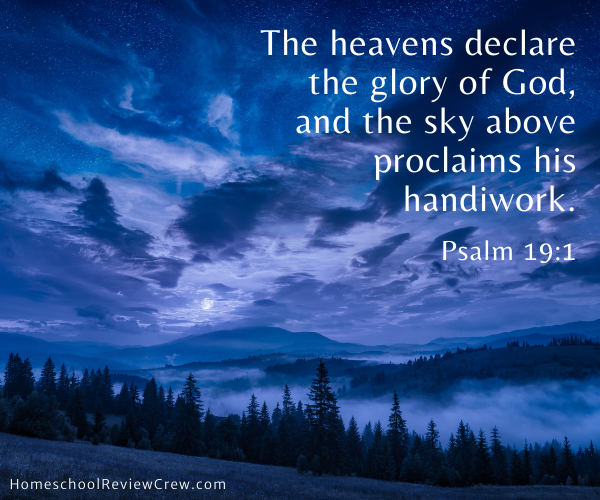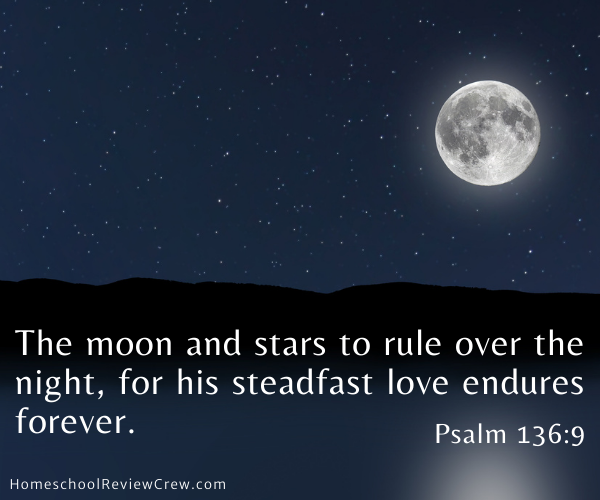The beauty of God’s night sky with its twinkling stars is so alluring.
“Lift up your eyes on high and see: who created these? He who brings out their host by number, calling them by name; by the greatness of his might and because he is strong in power, not one is missing.” Isaiah 40:26

While we may not be able to learn the names of every star as God has, there are a multitude of resources available to help us study astronomy in our homeschools. From curriculum to hobby groups with telescopes to borrow, we can help our children be excited about learning about the night sky.

When we go outside as a family at night to view the stars and planets, let us proclaim God’s work. He has set before us the stars to guide our journeys. His stars inspire us and allow us to share our creativity with stories and tales. Ancient civilizations looked at the stars, connected them, and created stories about the pictures they drew in the night sky. We can do the same with our own children today. While teaching them the recognized names for the various constellations can be important, allowing them to be creative also holds a special place in homeschooling.
There are a variety of stargazing apps that will help you identify and label constellations including Google Sky, SkySafari, Star Tracker, Star Walk 2, and Sky Map which our family has been using. With some of the apps, you can hold your phone up to the night sky and the app will show all the stars and planets that should be visible. You can also purchase books and curriculum that will help you identify constellations.

While studying the stars, it seems very natural to look to our Bible to read how God demonstrates His love for us. God created the heavens and the earth for us. He separated the light and darkness. He placed lights in the heavens to separate the day from the night and provide a sign to separate seasons and the passing of time.
So while man has named the stars in the heavens for mythological creatures and individuals such as Cassiopeia (a Greek queen who boasted of her beauty), we can teach our children that God has names for all the stars. We may not know God’s names for the stars while we gaze at them from the earth, but we can appreciate His creation and His love for us.
Stars in the Sky
If you are stargazing during the months of November to February, look for the largest and most recognizable star in the heavens—Orion. No matter where you live on the earth, you should be able to find Orion. Orion is named for a Greek hunter. Two of the ten brightest stars are found in the constellation Orion. You can find them at the right shoulder and left knee of the hunter.
Depending on where you live you may be able to view another important and recognizable constellation year-round. Ursa Major, or the great bear in Latin, is mentioned in several cultures and stories. Homer speaks about the great bear in his epic the Iliad and Job mentions in the Bible. Ursa Major plays an important role in history as the North Star—which is part of the Big Dipper in Ursa Major—was used to guide the men, women, and children who used the Underground Railroad to seek their freedom prior to the American Civil War.
What stars will you look for tonight?

Thank you to Kristen Heider of A Mom’s Quest to Teach for writing this introductory article.
Facebook | Instagram | Pinterest
Kristen is a wife, mother of two little ones, step mom of a teen, and a lifelong learner and educator. She has wanted to teach since she was in the fourth grade, thanks to her favorite teacher’s influence. Over the years she has taught formally and informally in a variety of settings—a zoo, church, high school, and National Park Site. Each experience has been a welcome challenge. Kristen has a Bachelors Degree in History and a Masters Degree in the Science of Teaching as well as over 20 years experience educating children and adults.
